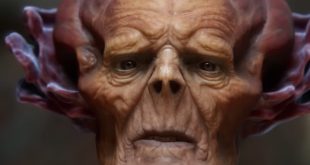On paper, Star Trek and Game of Thrones are worlds apart. They both represent ‘geek’ culture breaking into mainstream popularity, but the futuristic ruminations of the Enterprise and its crew is a lightyear away from George RR Martin’s sex-and-swords political fantasy.
“There’s one point of similarity,” retorts Disruptor Beam CEO Jon Radoff, “which is that both shows touch on violence in various ways.
“But in neither case are either of those stories about the violence, per se.”
Radoff’s studio Disruptor Beam made its name with Game of Thrones spin-off Ascent in 2013, followed by Star Trek Timelines this year. Both releases share thematic DNA, but their origins are distinctly separate.
“Sometimes in companies they start with the game system and then they try to back that system into the IP,” Radoff recalls. “We start with the IP and say: ‘What are the things that players are going to want to do in this world?’ Then we build up a system from those verbs, as opposed to the other way around.”
Our game system sort of combines Choose Your Own Adventure aspects with RPG mechanics. Some people have compared it to fantasy football with phasers.
DIVIDE AND CONQUER
Ascent launched as a 2D browser game, before moving to iOS and Android, while Timelines came straight to mobile.
“People were already interacting with games built around this kind of IP through multiple screens,” Radoff observes. “We had the view that to build a really great game that engages people in the same places where they’re already interacting, we would have to be on multiple devices.”
Disruptor Beam created Ascent’s iOS and Android versions as proprietary clients – a decision Radoff describes as “frankly something we never want to repeat again”.
“I wouldn’t point to either of those porting efforts as shining examples of how anyone should do it today,” he admits.
“Unity isn’t the only game in town in terms of being able to do this, but it does a good job of making it possible to target multiple devices and have a uniform experience across those.”
The studio has worked to scale Unity up to its team of 20-plus devs – but Radoff accepts that mobile should’ve been considered from the start.
“When you start small and then add the increments to grow your business, you tend to make decisions that get you right to that next milestone, but you don’t always make the broad architectural decisions that you might make if you knew upfront a lot more information about your market,” he reveals.
“The difference with Star Trek is we went into it with a lot more knowledge about how big the product would be on multiple screens, so we knew that had to be a requirement from day one, rather than something that we incrementally delivered.”
We ask: ‘What are the things that players are going to want to do?’ Then we build up a game system from those verbs.
DEEP SPACE
Timelines combines Ascent’s 2D menu-driven management with inter-ship combat rendered in 3D.
“We wanted to authentically and gorgeously portray all the things you would see out the window of a starship,” recalls Radoff. “The ability for ships to battle each other was really an extension of that.”
Yet, through the hail of pulsing lasers and monolithic cruisers in 3D, Disruptor Beam remained true to Star Trek’s core.
“The character-driven elements were a little more challenging with Star Trek because the stories are so sophisticated and they tend to not always orientate around violence,” Radoff muses.
“Our game system sort of combines Choose Your Own Adventure aspects with RPG mechanics. Some people have compared it to fantasy football with phasers.”
Article originally published in Develop: March 2016 issue.

 MCV/DEVELOP News, events, research and jobs from the games industry
MCV/DEVELOP News, events, research and jobs from the games industry



